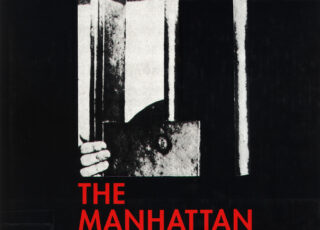Tschumi, The Manhattan Transcripts
The Manhattan Transcripts is a set of theoretical drawings developed by Bernard Tschumi between 1976 and 1981. They differ from most architectural drawings insofar as ...
Continue Reading →Tschumi, Red is not a Color
Part monograph, part work of architectural theory, part novel, the book narrates a journey through a personal history of architecture and architectural ideas in five ...
Continue Reading →Tschumi, Event Cities 4
Event-Cities 4 forms part of the Event-Cities series by Bernard Tschumi, documenting recent built and theoretical projects in the context of his evolving views on ...
Continue Reading →Tschumi, Event Cities 3
In Event-Cities 3, Bernard Tschumi explores the complex and productive triangulation of architectural concept, context, and content. There is no architecture without a concept, an ...
Continue Reading →Tschumi, Event Cities 2
In Event-Cities, Bernard Tschumi expanded his architectural concerns to address the issue of cities and their making. Event-Cities 2 continues this project through new architectural ...
Continue Reading →Tschumi, Event Cities 1
Bernard Tschumi’s Event-Cities presents an original selection of his most recent architectural projects, which are at the center of polemics on architecture and cities today. ...
Continue Reading →Tschumi, Architecture and Disjunction
Avant-garde theorist and architect Bernard Tschumi is equally well known for his writing and his practice. Architecture and Disjunction, which brings together Tschumi’s essays from ...
Continue Reading →Kretzer, Synthetic Realities
Synthetic Realities embarks on a groundbreaking journey into the dynamic landscape of design, art and architecture in the era of artificial intelligence. Edited by Manuel ...
Continue Reading →Vuillemin, Necessity or Contingency
The Master Argument, recorded by Epictetus, indicates that Diodorus had deduced a contradiction from the conjoint assertion of three propositions. The Argument, which has to ...
Continue Reading →Stahl, Martianus Capella and the Seven Liberal Arts: Volume 2
Part of a detailed compendium of late-Roman learning in each of the seven liberal arts, set within an amusing mythological-allegorical tale of courtship and marriage ...
Continue Reading →

